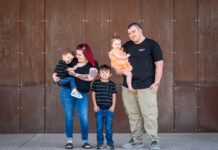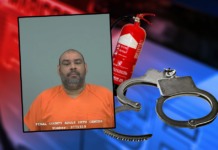
Third in a four-part series on the business of agriculture in Maricopa
Victor Jimenez isn’t a celebrity or a big shot figure. He’s not a famous musician or a local politician. He’s just an everyday, working individual.
But still, he’s made an impression on many kids from around the state — so much so that when Jimenez goes to the grocery store, sometimes a child will recognize him and come up to say hello.
Jimenez supervises the Ag-Venture program at the University of Arizona’s Maricopa Agricultural Center. As the 4-H Extension Agent, he’s in charge of creating fun, interactive field trips focused on agriculture and farming for students all over.
Students visiting the center go on tractor tours, navigate corn mazes, harvest produce (when in season), make crafts, milk a fake cow, plant a seed, and learn about how agriculture and farming work.
“I make no bones about it,” Jimenez said. “I say it’s the best field trip ever. Everyone that comes likes it.”
The field trip is so good Jimenez calls it Agriculture Disneyland.
Bob Roth, the interim resident director at the Maricopa Agricultural Center, said having a place where kids can go to learn about agriculture is important. In past generations, children learned about farming through a family member who had a farm. That’s not always the case anymore.
Now, kids don’t know if a carrot is grown on a tree or in the ground, Roth said. Programs like the Ag-Venture one are important because they show that everyone is involved in the agriculture business.
“If you eat, you’re involved in agriculture,” Roth said.
Around 8,500 children — from as close as Maricopa and as far away as Show Low — participated in the Ag-Venture program last year. When Jimenez started the program around 10 years ago, he thought he’d be lucky to reach 150 kids.
“They asked me how many students I was going to reach. There wasn’t even a program,” Jimenez said. “I said, ‘Oh, 650 people for the first year.’ I truly thought if I get 150 people, I’ll be so lucky.”
Jimenez passed the 650 mark — by a lot. Around 1,800 students participated in the program in its first year. In its second and third years, Jimenez reached around 2,500 and 3,500 kids, respectively.
“We’ve touched a want and a need and an interest that people really want to know about,” Jimenez said.





![O’Reilly gears up for second Maricopa location An exterior view of O'Reilly Auto Parts on John Wayne Parkway on May 2, 2024.[Monica D. Spencer]](https://www.inmaricopa.com/wp-content/uploads/2024/05/spencer-050224-oreilly-second-location-web-218x150.jpg)

![Maricopa restaurateur makes Food Network connection [Namkeen Dhaba]](https://www.inmaricopa.com/wp-content/uploads/2024/04/439456716_377105198650519_7536248579664805896_n-218x150.jpg)


![Merging lanes incite more 347 anger A merging lane sign sits on the side of State Route 347 northbound lanes during evening traffic on April 30, 2024. [Monica D. Spencer]](https://www.inmaricopa.com/wp-content/uploads/2024/04/spencer-043024-adot-merging-lanes-347-web-218x150.jpg)



![SR 238 closures start tomorrow SR 238 [File]](https://www.inmaricopa.com/wp-content/uploads/2022/04/az-238_e_seq_034-100x70.jpg)


